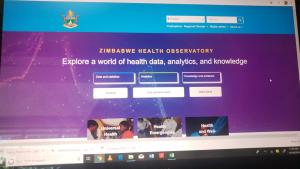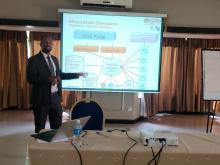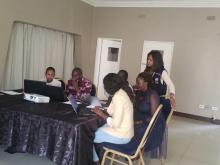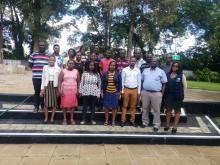Zimbabwe’s data on health SDGs progress now more accessible: Zimbabwe’s first step towards a National Health Observatory
Zimbabwe’s health information is now easily accessible following the validation exercise to approve and enter it into the African Health Observatory (AHO) in December 2019. The validation meeting was convened to introduce the African Health Observatory; to introduce the concept of a National Health Observatory (NHO) and to validate and approve data for the AHO portal, with support from WHO technical staff. Program indicators that can be used to measure the country’s progress towards the SDGs and Universal Health Coverage like TB, HIV, Malaria, Nutrition, Human Resources, Health Information, Reproductive, Maternal, Neonatal and Child Health and Population Projections for the year 2011 to 2018, among others, were imported into the system and are now available via the AHO portal. This is the first step for Zimbabwe towards establishing a National Health Observatory. “We envisage to have health data publicly available, and we continue to work towards introducing platforms that facilitate access to information on the health status of the country, so in 2020 the Ministry of Health and Child Care will be engaging its stakeholders to introduce the concept of a National Health Observatory, which, if adopted, would be implemented in the same year,” said Mr Munyanyi, Deputy Director National Health Information Systems, in the Ministry of Health and Child Care.
The African Health Observatory is an online, open-access one-stop repository for health information. Its aim is to strengthen the health information system (HIS) through increasing access to health data and statistics, thereby facilitating use of evidence for policy and decision-making. The AHO is the core of a reinforced regional health information system, interacting with national health observatories (NHOs), to contribute to data collection and analysis, monitoring and evaluation at national level. AHO products include online publications of the Region’s health situation and trends and an annual atlas of the African Health Statistics. The AHO is used to monitor the Region’s progress towards Universal Health Coverage and the Sustainable Development Goals (UHC/SDGs). According to Thandekile Moyo HMIS/ M&E Officer in WHO Country Office for Zimbabwe, “we are excited that the AHO gives countries a platform to share data which has not been historically available; and improves the availability, quality and use of information and evidence for policy and decision-making by strengthening health information systems.”
The African Health Observatory was created in 2010 following recommendations of the Algiers and Ouagadougou declarations that were endorsed by the 59th session of the Regional Committee for Africa, (AFR/RC59/5). In 2012, the 62nd session of the Regional Committee (AFR/RC62/R5) requested WHO to support Member States to establish National Health Observatories (NHOs). The African Health Observatory is centrally managed at the WHO Regional Office for Africa to ensure data, analytics and knowledge of Universal Health Coverage (UHC) and SDGs are regularly available at regional and country level.
The Kadoma validation meeting was attended by senior officers from the Ministry of Health and Child Care (MOHCC), including Health Information Systems and Monitoring and Evaluation Officers. These were introduced to the concept of a National Health Observatory and plans to establish one for Zimbabwe were mooted.
Visit http://aho2.aho.afro.who.int/ for health data on Zimbabwe.






